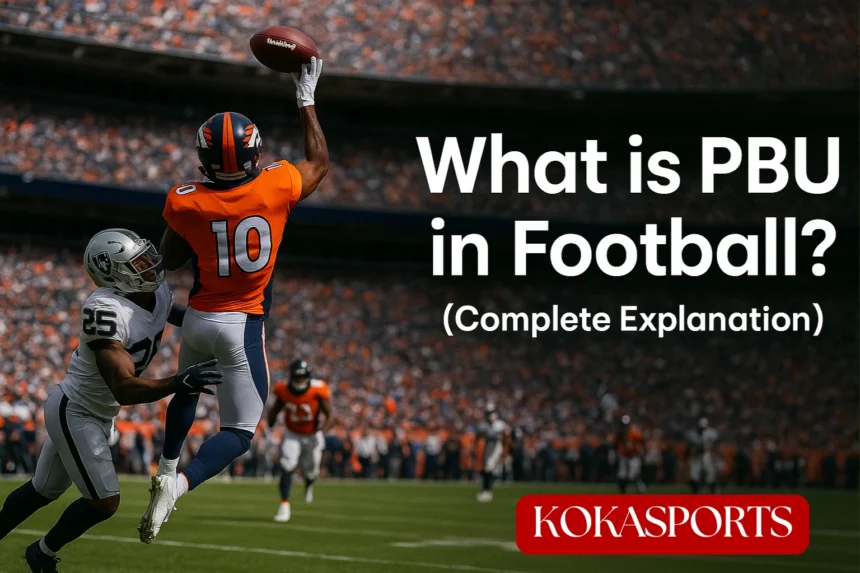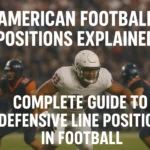Football fans watching games often see PBU pop up on stat sheets, but many don’t understand what this important abbreviation means. In the sport of football, defensive statistics helps fans appreciate the game better. This comprehensive guide will explain everything about what is PBU in football, from the basic meaning to advanced strategies that football coaches use to teach defensive players.
what is PBU in Football: Knowing the Abbreviation and Its Meaning
The PBU abbreviation stands for “Pass Break-Up” or “Passes Broken Up” in football. This acronym represents one of the most important defensive statistics in the NFL and college football. When a defensive back or any defensive player disrupts a pass attempt without making an interception, they get credit for a PBU. The meaning behind this statistic shows how effectively a defender can defend against the pass while staying in coverage.
A pass break-up occurs when a defensive player makes contact with the ball or receiver at the exact moment needed to prevent a completion. Unlike an interception, where the defender catches the ball, a PBU happens when the defender simply disrupts the pass attempt enough to make it incomplete. Football coaches commonly use PBU stats to evaluate how well their defensive backs cover receivers and execute their assignments.
The context of getting a PBU versus going for an interception is crucial for defensive backs to understand. Sometimes PBU when the interception isn’t the safest option, smart defenders will knock the ball away instead of risking a dropped interception. This technique protects the defense and ensures the pass falls incomplete rather than potentially giving the opposing team another chance.
Read More: What is a football jamboree: A Complete Guide
What Constitutes Getting a PBU in Football?
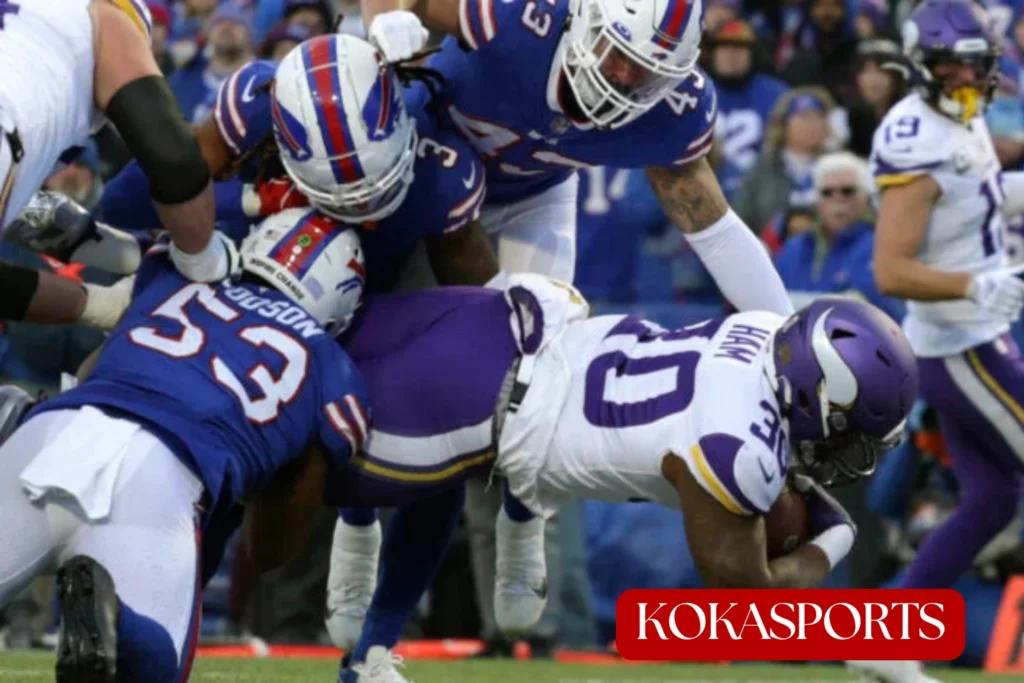
To get a PBU in football, a defensive player must physically impact the pass attempt in specific ways. The official criteria include making contact with the ball during flight, disrupting the receiver’s hands while catching, or using legal contact to prevent the catch. These actions must happen during an actual pass attempt – not during run plays or when the quarterback throws the ball away under pressure.
Types of plays that result in PBU credit:
- Ball contact: Batting or deflecting the pass at any point during flight
- Receiver disruption: Legal contact that prevents the catch without penalty
- Timing disruption: Perfect coverage that forces an incomplete pass
- Line of scrimmage interference: Defensive ends and linemen tipping passes
The timing of contact is everything when earning a PBU. Defensive backs know that hitting the receiver too early results in pass interference, while contact too late means the receiver might complete the catch. Pro defensive players practice this timing constantly, working to perfect the technique that allows them to break up passes legally.
Common situations that don’t count as PBUs:
| Situation | Why No PBU Credit |
|---|---|
| QB throwaway | No defensive contact |
| Receiver drops | No defender involvement |
| Weather-affected pass | Natural conditions, not defense |
| Penalty on play | Illegal contact negates credit |
Football Positions That Get PBUs: From DB to Pro Players
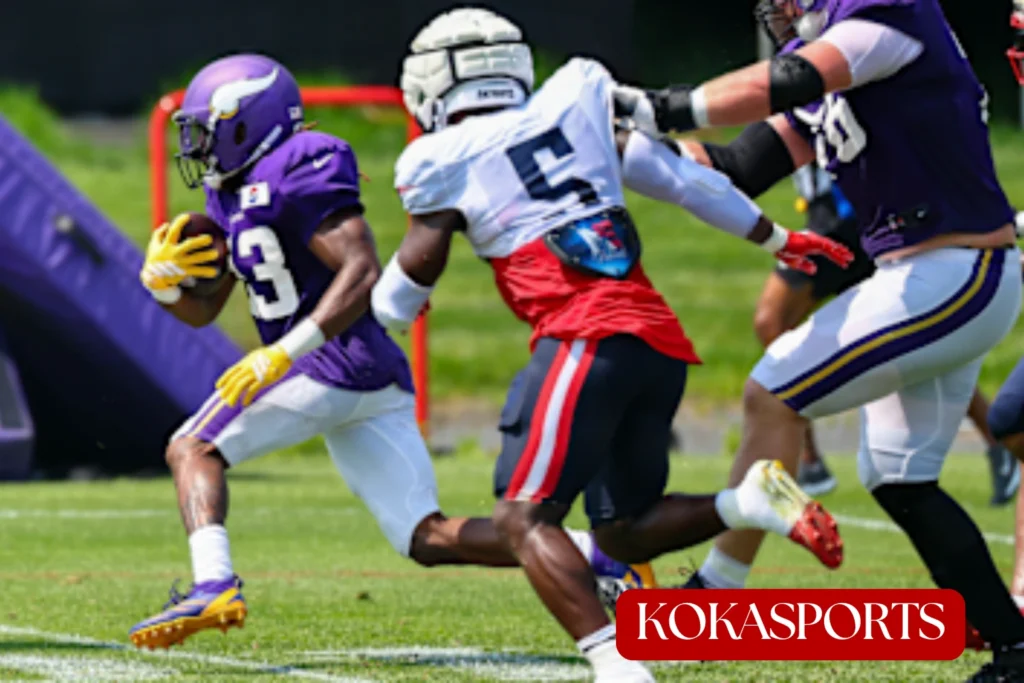
DB Position and Pass Break-Up Production in Football
The defensive back position generates the most PBUs in football because they spend the most time in pass coverage. Cornerbacks and safeties make up the secondary, and these players are specifically trained to cover receivers and defend against the pass. A skilled DB can accumulate 10-15 PBUs per season, showing their ability to stay with receivers and make plays on the ball.
Cornerbacks lead all positions in PBU production because they face the most pass attempts. When a wide receiver runs a route, the cornerback must mirror their movements and be ready to break up any pass thrown their way. The best cornerbacks combine speed, timing, and ball skills to consistently disrupt passes without drawing penalties.
Safeties and cornerbacks work together in the secondary to defend different areas of the field. Free safeties often get PBUs on deep passes, while strong safeties earn them in run support situations when receivers try to catch short passes. Both positions require excellent field awareness and the ability to read where the quarterback throws the pass.
Linebacker Position PBU Statistics in Football
Linebackers typically record fewer PBUs than defensive backs, but their pass break-ups often come in crucial situations. Middle linebackers might get 3-5 PBUs per season, usually on passes thrown over the middle or during blitz situations. Outside linebackers can earn PBUs while rushing the quarterback, especially when they get their hands up at the line of scrimmage to block or tip passes.
The linebacker position requires different skills for earning PBUs compared to the secondary. These players must transition quickly from run defense to pass coverage, often covering tight ends or running backs on short routes. When linebackers execute the drill properly, they can surprise quarterbacks and receivers with their coverage ability.
Defensive Line Position PBU Opportunities in Football
Defensive ends and interior linemen get PBUs differently than coverage players. These defensive players earn pass break-ups by getting their hands up during pass rush attempts, tipping passes at the line of scrimmage before they reach receivers. While linemen might only get 1-2 PBUs per season, these plays can be game-changing moments that disrupt the offense’s rhythm.
Interior linemen face unique challenges when trying to earn PBUs. They must rush the quarterback while staying aware of potential screen passes or quick throws. When defensive tackles time their jump perfectly, they can knock down passes and earn PBU credit while still pressuring the quarterback.
What a PBU in Football Context by Position
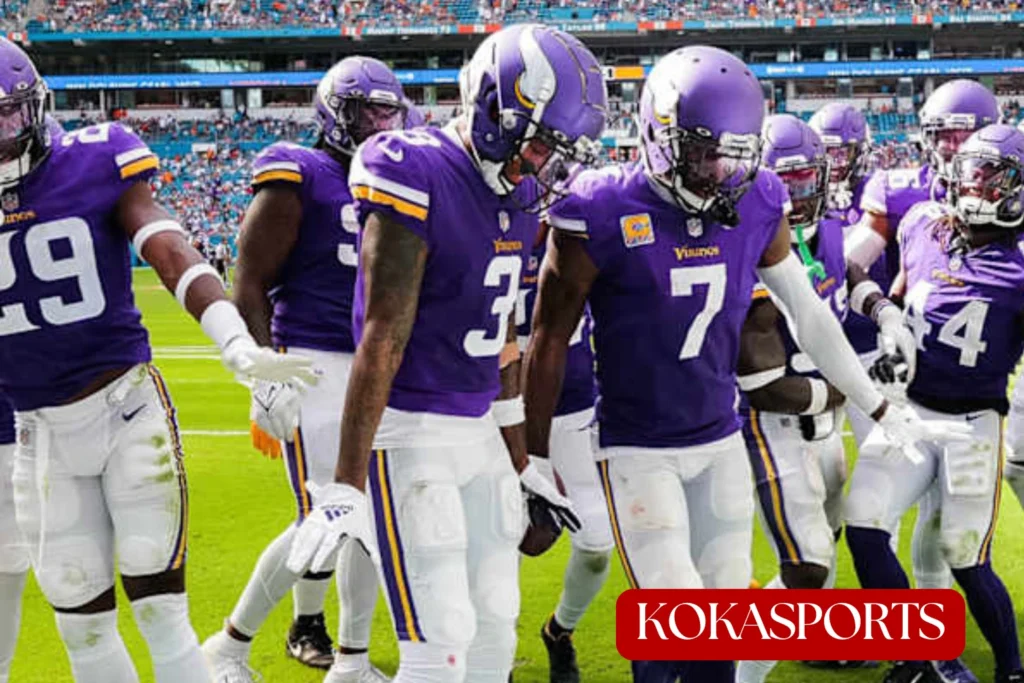
PBU vs Completed Pass Analysis in Football
Every PBU represents a successful defensive play that prevented the offense from advancing the ball. When analyzing PBU statistics, coaches look at success rates in different situations. Red zone PBUs are especially valuable because they prevent touchdowns, while third-down pass break-ups often force punts and give the ball back to their team’s offense.
The impact of pass break-ups extends beyond just stopping one play. When defensive players consistently earn PBUs, they force quarterbacks to throw with less confidence and make receivers hesitant about catching passes in traffic. This psychological effect can influence an entire game, making the offense less aggressive in their pass attempts.
Situational PBU Value:
| Down & Distance | PBU Impact | Game Effect |
|---|---|---|
| Third & Long | Forces punt | Field position gain |
| Red Zone | Prevents TD | Limits to field goal |
| Two-minute drill | Stops clock | Protects lead |
| Fourth down | Turnover on downs | Possession change |
Strategic Value of PBUs in Pro Football by Position
Professional teams track PBU stats to understand how well their defense performs against different types of pass attempts. When a defensive player accumulates high PBU numbers, it often indicates they’re getting targeted frequently but making good plays on the ball. This statistic helps coaches evaluate whether players are in good position and making the right decisions in coverage.
The ability to earn PBUs instead of allowing completions can determine game outcomes. In close games, one or two key pass break-ups might be the difference between winning and losing. Pro football teams study opponent tendencies to put their best PBU producers in positions where they can make the most impact.
How Pro Football Coaches Track PBU Stats by Player Position
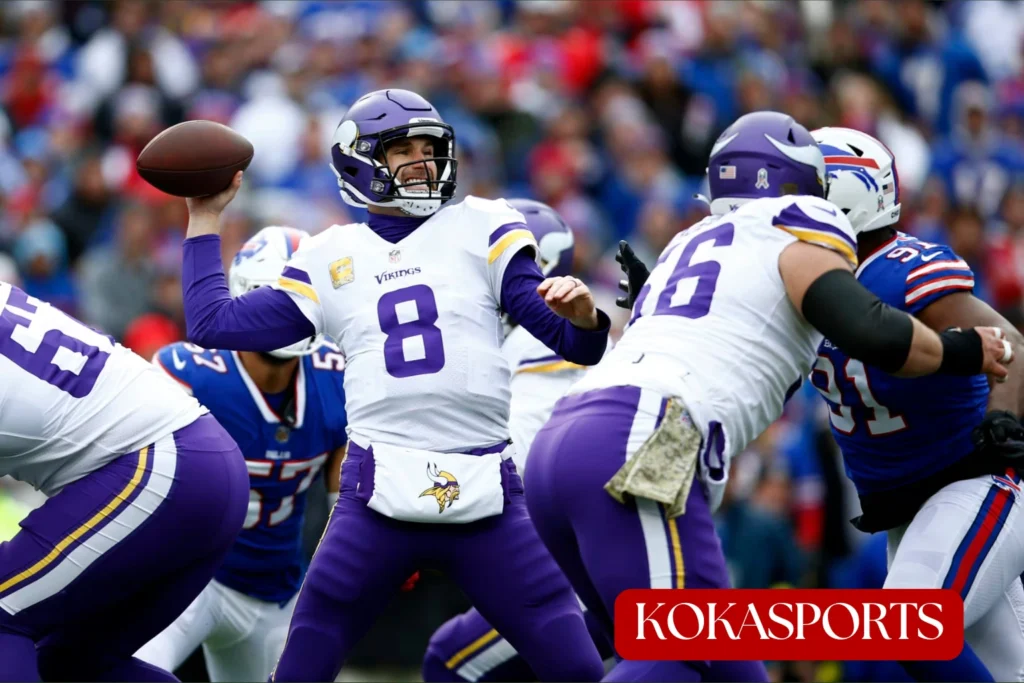
Advanced PBU Metrics for Football Players by Position
Modern football analytics go beyond simple PBU counts to measure effectiveness. Coaches track PBU rate per coverage snap, which shows how often a player breaks up passes relative to how many times they’re involved in coverage. Elite defensive backs might have PBU rates of 8-12%, meaning they break up roughly one out of every 10 passes thrown their way.
Key PBU metrics coaches monitor:
- PBU per game average
- Target rate vs. PBU rate
- Completion percentage allowed
- PBU in key situations
Teams also analyze the quality of PBUs, not just quantity. A PBU on a third-and-long situation is more valuable than one on first down. Smart coaches teach their players to recognize these crucial moments and prioritize making plays when it matters most.
Training for Better PBU Performance by Football Position
Physical Development for Pass Break-Ups by Position
Developing PBU skills requires specific physical training that varies by position. Defensive backs need exceptional hand-eye coordination to time their contact with the ball perfectly. They practice drills that improve their ability to locate the ball while running at full speed, often using tennis balls or reaction-based exercises.
Essential PBU training components:
- Ball tracking drills: Following passes while in coverage
- Hand placement exercises: Learning legal contact techniques
- Timing repetitions: Practicing when to make contact
- Film study sessions: Knowing receiver tendencies
Linebackers and defensive linemen need different training approaches for earning PBUs. Linebackers work on transitioning from run fits to pass coverage, while linemen practice getting their hands up during pass rush moves. Each position requires specific techniques to maximize PBU opportunities.
Mental Skills for PBU Excellence by Football Position
The mental aspect of earning PBUs is just as important as physical skills. Defensive players must read the quarterback’s eyes, understand route concepts, and anticipate where passes will go. Film study helps players recognize patterns and situations where PBU opportunities are most likely to occur.
Experienced defensive backs learn to recognize when going for an interception is too risky and when breaking up the pass is the safer option. This decision-making ability separates good players from great ones. The best defenders prioritize team success over personal statistics, choosing to knock down passes when it’s the right play for the situation.
Common PBU Misconceptions in Pro Football by Position
Many fans assume that high PBU numbers always indicate great defense, but the context matters significantly. A player with many PBUs might be getting targeted frequently because offenses view them as a weak spot. Conversely, elite corners sometimes have lower PBU numbers because quarterbacks avoid throwing in their direction.
Another common misconception involves the relationship between PBUs and interceptions. Some fans think players should always try to intercept passes, but smart defensive players know when to secure the pass break-up instead. In the end zone or on fourth down, knocking the ball away is often smarter than risking a dropped interception.
Conclusion
PBU in football helps fans appreciate the nuanced defensive play that happens on every snap. From cornerbacks in tight coverage to defensive ends tipping passes at the line of scrimmage, every position contributes to pass break-up success in different ways. The meaning behind PBU statistics goes far beyond simple numbers – these plays represent crucial moments where defensive players execute their technique perfectly to stop the offense.
Whether you’re watching your favorite team’s defensive back make a game-saving pass break-up or analyzing stats in your fantasy football league, knowing what PBUs represent adds depth to your football knowledge. This defensive statistic captures some of the most exciting and skillful plays in the sport, showcasing the ongoing battle between offense and defense that makes football such a compelling gridiron glossary entry for fans worldwide.
FAQs
What does PBU mean in football?
PBU stands for “Pass Break-Up,” when a defender disrupts a pass to make it incomplete.
What counts as a PBU?
A PBU is credited when a defender tips, deflects, or prevents a catch without intercepting.
What’s the hardest position in football?
Quarterback is the hardest position due to decision-making, leadership, and pressure.
What is PBK in football?
PBK stands for “Pass Block,” when an offensive player protects the quarterback on a pass play.

